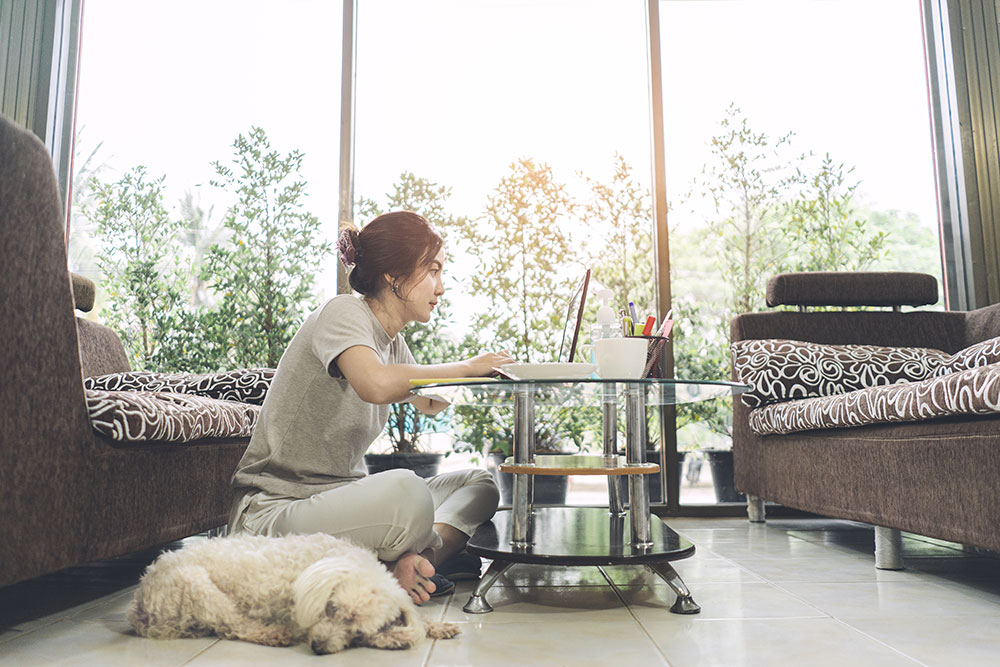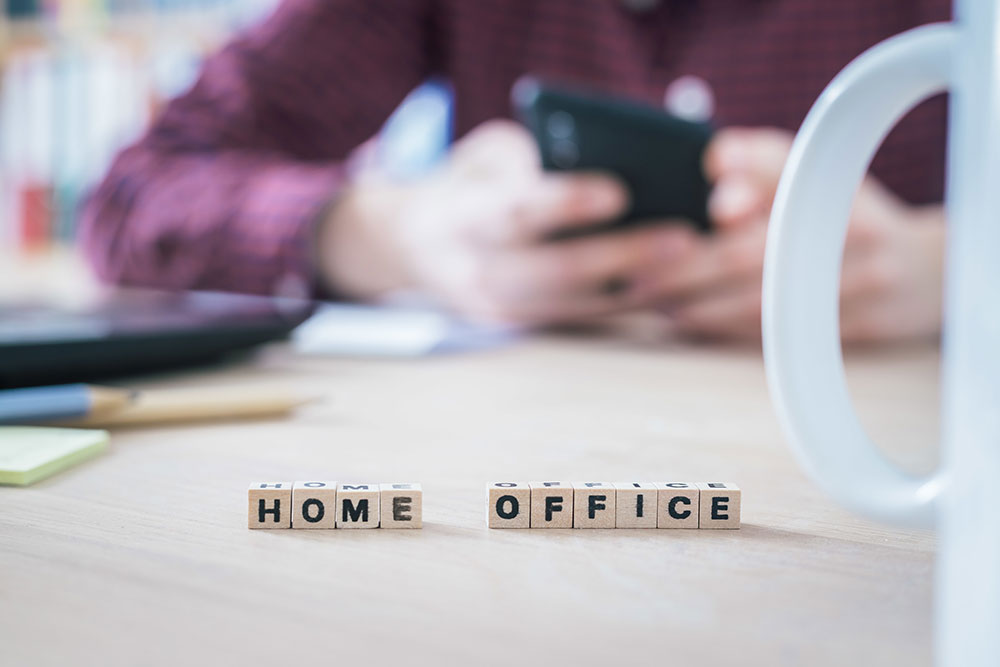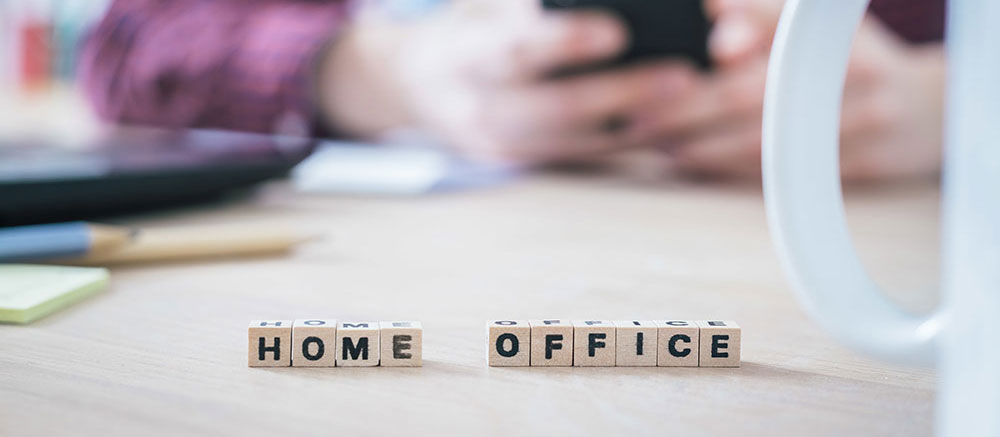The pandemic, known as the coronavirus COVID-19, has affected the way people live their lives. Many things have changed, and the uncertainty of when it will end makes waiting even more unbearable for some individuals.
Several Australians have turned to work-from-home jobs, which have become extremely beneficial during these hard times. If you have worked from home even before the pandemic, you probably already know about the deductions you can claim. These tax deductions are for some of your eligible work-related expenses.
There are two main groups of individuals who work from home: those who run their business in their own property and those who are employees of a remote company.
Some examples of those who run their business from home are:
- Small business operators in which their home is their main office
- Tradespersons with a home workshop
- Medical professionals, such as doctors, who provide consultation and other services in their homes
If your home is the main area where you conduct your business, there are some deductions you can claim, including the expenses for:
- Cost of utilities, such as electricity, which you use when you provide services
- Business-related phone calls and the device’s rental, but not its installation charges
- Depreciation of home office equipment and other items, including desks, computers, and chairs
- Depreciation of curtains and other fixtures in the home office
Rent, mortgage, and other occupancy expenses
Most Australians, though, do not have their own business. Rather, they work for a company while they stay at home. The COVID-19 situation is still ongoing. As we continue to battle it, working from home is one of the best ways to survive by keeping your finances afloat.
The Government has expressed its understanding of the increased need to work from home. While working, Australians incur expenses, which can be claimed during tax time.
The Shortcut Method
Many Australians find tracking of expenses difficult. It is why the Government has offered a simpler way for such a task, dubbed as the shortcut method. What is it? This temporary solution allows people to calculate any additional expenses for operating from home, starting from the 1st of March until the 30th of June at the very least. The timeframe may be extended if work patterns have not returned to normal during that allotted time. The Australian Taxation Office will review this new arrangement, in case it should still be implemented in the next financial year.
How does this new shortcut method benefit Australians? The primary goal is to create a simplified way of tracking expenses. Through the shortcut method, people in the country do not have to calculate the costs of their running expenses. Instead, they provide the benefit of claiming 80 cents for every hour of work.
Originally, taxpayers use the 52-cent per hour calculation method. Even with the shortcut method, you can still use the old way if you are more comfortable with it. As you may know, you will have to compute all work-related expenses that you pay for while working at home. These costs include phone and Internet charges, computer consumables, and even stationeries or papers. The decline in the value of laptops and other devices is also a part of the calculation.
Under the original 52 cents method, however, taxpayers are required to apportion their consumption of the expenses. It means they should determine and differentiate those for personal and work. Also, it is important to distribute these expenses based on reasonable calculations.

Does Working from Home Offer Increased Tax Returns?
It is easy to see that the difference between 52 and 80 cents is quite significant. Tax advisers, however, are not entirely convinced of this new scheme. According to them, Australians only have two choices: easier computations with less record-keeping vs preparing their records to claim bigger deductions.
The 80 cents per hour method may not be a good idea for those who have already worked from home prior to the pandemic. While, at first glance, it appears to give more returns, the older method is better. The new way is for many Australians who have never tried working from home. Therefore, they would find it a challenge to evaluate their expenses using the existing method.
Although the 80 cents per hour technique is much simpler and appears the more generous choice, there are still three rules to bear in mind. The same rules, which are listed below, also apply to the 52-cent-per-hour method:
- You should spend the money from your own pocket, and you were not reimbursed
- The expense is directly related to how you earn your income
You have a record to prove the claim
Based on the guidelines above, it is possible to under-claim your tax benefits using the new method.
The ATO’s efforts to make everything simpler for taxpayers are highly praised. However, the new method is merely a means to simplify claims. For taxpayers looking to get the most returns, they should still look at all the options available. This way, they can avoid paying more tax in the end.
Let us have an example:
Some people pay anywhere from $80 to $100 for their monthly Internet and phone expenses. They may want to get extra deductions using their printers or scanners. Unfortunately, the shortcut method will not give them that added incentive. It will include additional items, but claiming them separately can give more deductions.
For instance, if you work 40 hours per week from home, you only get $40 extra per month using the new method. It is not a lot, especially considering it includes not just your Internet and phone bills, but also equipment depreciation, papers, and other home office expenses.
What You Can and Cannot Claim
Most people who work from home carry out their roles using their phones, computers, and other electronic devices. If you are among them, you can claim a deduction for such expenses.
Some of the things that you can claim include the following:
- The running costs pertain to the expenses that you incur as you operate:
- Home office equipment, including printers, scanners, and telephones
- Work-related mobile calls and phone rental costs
- Heating, cooling, and lighting expenses
- Repairs for any home office fittings and furniture
- Cleaning expenses for your home office space
The deductions are not similar to one another. If it is your first time to lodge your tax return document, you can find the procedure a little intimidating. Here is a guide to lodging your tax return to understand better. Some claims, particularly your home office equipment, can only be claimed based on their decline in value. Others are claimable for the total cost. The limitation is set on items that cost $300 and up.
- Occupancy ExpensesYou can claim expenses relating to your home office. However, this deduction does not apply if you just work from home from time to time. If you do not use your home as your regular office space, you may not be able to make a claim. If you pay the rent, have mortgage interest, or even council rates, you cannot get a deduction if you do not entirely work from home during the pandemic.
- Equipment and AssetsSome tools and equipment that you use in your office at home can be deducted from your taxes. However, there are rules to follow. The most important thing to remember is that these items should be directly related to your work. Therefore, they influence your earning potential.The amount you can claim highly varies depending on how you use the items. An example is for a computer that you recently purchased. If you use if for work and use it for personal purposes, you are only allowed to claim 50% of the total cost. If it costs $300 or more, the amount will be based on the decline in the value of the item. Before that, here is an income tax calculator that will help you estimate the total payment after taxes.Some examples of tools and assets that you can claim for your home office are:
- Software programs
- Calculators
- Filing cabinets
- Lamps
- Chairs
- Desks
You can also claim the expenses relating to the item’s repairs, insurance, and interest if it is a rental.
How much can you claim? Many factors affect the amount of percentage that you can claim. If part of your income comes from the activity that you perform in your home office, you can claim it by treating it as a running expense.
When making a claim, one method that you can use is the fixed-rate system, which gives you a decline in the value of the equipment or furniture pieces. With the fixed-rate method, you can claim the expenses at 52 cents for every hour that you work.
You will need to estimate the expenses, leasing, and depreciation, along with the repair costs you may have incurred. If other people use the home office, be aware that the hours do not qualify for the deduction.
For a more detailed look at which expenses you can claim, we have tax return checklists for different workers.

How to Maximise Your Tax Refunds
As you can see from above, there are many things that you can claim back on tax. Desks, cabinets, power bills, computers, and even cleaning products can be claimed as long as they are related to your job. With strict social distancing measures implemented, makeshift spaces have been turned into offices.
Employment has become more and more uncertain. Business hours have reduced just to ensure that they will survive during the nationwide shutdown. For working Australians, a decent tax return scheme is more important than ever.
While it is true that you can claim many expenses, you should note that you can only get back a portion of the cost. Let us say that you have recently purchased toilet paper supplies for your home office. You increased the supplies you bought by 30%. Therefore, you are only allowed to claim that specific percentage.
It is easy to see which expenses are claimable. Your employer would normally purchase and provide items to the employees. If the pandemic has led you to buy them using your own money, they can be claimed.
Unfortunately, many Australians find piecing together their expenses a lot harder than performing their daily office jobs. It is why the Australian Taxation Office created a standard that would allow the taxpayers to calculate their expenses easier, which is through the 52 cents per hour method. This flat fee makes things easier, but even better is the new shortcut method.
This method simply asks you to record the number of hours that you work each day. It will be used as evidence of your claim. This way, you do not have to calculate each expense one by one.
The main advice here is to claim the actual costs of your expenses, rather than going for the flat-rate allowance. It includes the shortcut method. Think about it. If you work 150 hours monthly, you only get to claim up to $120 per month.
Meanwhile, if you choose the old method where you take the actual cost of the expenses, the key lies in the evidence you can present. It does require more work on your part, and you may not even have the time to go through your receipts and other evidence to present. However, it does pay to be a little bit diligent in keeping the records relating to your expenses.
The ATO will require you to present receipts that show your expenses on the depreciating assets. The office will also acknowledge diary entries, which show a detailed breakdown of your expenses every day. If you can give your full diary, it will be helpful. It should demonstrate how much of the equipment, phone, or asset you have used over a particular month.
You can provide itemised phone accounts, which identify all the calls you have made relating to work, as well.
Compared to the new shortcut method, the old way is not easy at all. However, if you already experienced lodging your tax returns before, it should not be a problem. If you just started working from home due to the pandemic, you may want to opt for the old method if you want bigger deductions.
If you’re ready to get your tax return started, we are here to help!


